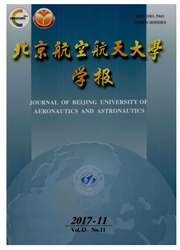

 中文摘要:
中文摘要:
对高阶激波捕捉格式的性能进行了系统的测评,重点分析了Suresh和Huynh(1997)所提出的Monotonicity-Preserving格式的性能.结果表明Monotonicity-Preserving格式的性能显著优于原始WENO(WeightedEssentiallyNon—Oscillatory)格式,和改进型WENO格式相当.对格式的分析进一步表明,迎风型的激波捕捉格式在湍流模拟方面的性能都不及高阶中心格式,其原因归结为激波捕捉格武所包含的线性和非线性耗散。因此,改进高阶激波捕捉格式的关键在于同时降低格式的线性耗散和非线性耗散,以提高格式对湍流脉动能量的保持和对小尺度脉动结构的捕捉能力.
 英文摘要:
英文摘要:
The high-order shock-capturing scheme ving scheme proposed by Suresh and Huynh (1997) (WENO). Great emphasis was imposed on the analysis for turb original ulence simulation. The assessment indicates the weighted essentially non-osc s were assessed by comparing the Monotonicity-Preser- with the weighted essentially non-oscillatory schemes of the performances of Monotonicity-Preserving scheme Monotonicity-Preserving functions much better than the tory scheme, even close to the improved weighted essentially non-oscil- latory scheme. In accordance with the analysis, all the assessed shock-capturing schemes can hardly emulate the high-order central scheme in simulating isotropic turbulence, which is attributed to the linear as well as nonlinear dissipation of the shock-capturing schemes. Therefore, both the linear and nonlinear dissipation should be reduced in order to improve the high-order shock-capturing schemes in preserving turbulence energy and capturing small-scale turbulence structures.
 同期刊论文项目
同期刊论文项目
 同项目期刊论文
同项目期刊论文
 Study of modeling unsteady blade row interaction in a transonic compressor stage part 2: influence o
Study of modeling unsteady blade row interaction in a transonic compressor stage part 2: influence o 期刊信息
期刊信息
